The Power Of Microdecisions: The Hidden Factors That Control Your Happiness, Success and Flow

 By Justin Faerman
By Justin Faerman
Co-founder, Flow Consciousness Institute
Most people think it’s the big decisions they have made over the course of their lives that have shaped it into what it is today—where you went to school, who you married, that big ‘mistake’ you made, what line of work you chose, attending that important training, finally launching your big dream project, having the courage to make a major shift in a new direction, deciding to leave your career to pursue your passions or travel the world and so on.
But the truth is that in many ways, it’s just the opposite—it’s all the thousands, if not tens of thousands—of microdecisions you make every day that you are often unaware of that shape the course of your life and hence, your reality, most strongly.
How Microdecisions Shape Your Life
Have you ever missed being in a major car accident by a few seconds? Or any kind of serious accident for that matter? Or perhaps, maybe you didn’t miss it, and you were in the accident after all. Everyone has been on both sides of the coin at one time or another. In most of those cases, if not all of them, making a few ultra-small, seemingly inconsequential choices could have prevented—or caused—the situation entirely.
For example, you could have chosen to spend an extra five seconds in bed before getting up that would have saved you from—or put you directly in the middle of—that accident. You could have chosen to stay at home instead of go out the night you ended up meeting the person who would eventually become your husband or wife. You could have chosen not to get a coffee that morning where you went into Starbucks and synchronistically met an old friend who offered you a job or opportunity that changed the course of your life. You could have not been on Facebook and missed that post that you saw recommending the book that you then read which unlocked massive growth in your business and altered your financial destiny forever.
You get the idea: seemingly inconsequential decisions we make all the time can radically change the course of our lives. And when you really stop to think about it, our days are absolutely filled with these highly influential microdecisions that we almost always make unconsciously, on complete autopilot without really thinking about them. In fact, the ratio of microdecisions to macrodecisions, or rather, decisions that we deem inconsequential and make on autopilot vs. decisions that we analyze consciously and thus deem consequential (which is often totally arbitrary, by the way), is something on the order of 1,000 to 1, respectively.
Knowing that, which of them do you think is going to have the biggest impact on your life: the thing you are doing tens of thousands of times per day or the thing you are doing a handful of times per day at most?
Exactly.
When you really boil this line of reasoning down to its essence, you realize that life is a giant synchronicity. Anything and everything only happens if you are in the right place at the right moment in time or if you were at the right place at the right moment in time in the past that set off a chain of events that eventually leads to the thing that is happening in your life right now.
And all of that only happens by making thousands upon thousands of microdecisions everyday from how long to spend tying your shoes to when you feel like getting out of bed in the morning to what you decide to wear that day, eat for breakfast, when you blink and so on, ad infinitum.
Really let this all sink in—its deep and can sometimes take a minute to wrap your head around fully.
Essentially, what I am saying is this: you position yourself in space and time through the decisions you make—and where you are on the planet (or anywhere in the universe for that matter) at any given moment determines what reality and experiences you have as a direct result of the influences and possibilities in your immediate environment.
Thus, your life is what it is because of all the cumulative decisions—conscious or unconscious—that you have made up until this very moment and whether or not you end up in an accident or become a billionaire or find yourself homeless on the sidewalk (and every possible scenario in between) is controlled by the endless series of microdecisions and a much smaller number of macrodecisions (referring to consciously made choices) that you are making every second of every day. Period.
Your decisions—and especially the microdecisions you make tens of thousands of times per day without consciously being aware of them—and the resulting actions you take based on those decisions are everything and are the biggest determinant of your actualized experience of reality, i.e. what is currently happening in your life. In a nutshell, as go your microdecisions, so goes your life.
On one level.
On another level, this then begs the question, ‘what exactly influences those decisions?’ and more specifically, ‘what is the programming that essentially runs my body, mind, life and reality on autopilot 24/7?’
The Programming That Controls Your Reality
Two things in particular:
1. Your beliefs (which are essentially perceptions) and
2. The resulting emotional state that they generate
At this point, some of you might be thinking: “Wait a second… what about thoughts? Thoughts are everything!” Thoughts are important solely as a translational tool between your unconscious and conscious mind. Let me explain.
Thoughts are the end result of a complex psychological algorithm consisting of thousands of unconscious beliefs and emotions interacting with your current life experience to produce a more coherent, simplified form of actionable data that is useful for your conscious mind to be able to relate to and process in a practical way. They are the synthesis of huge amounts of incoming psycho-perceptual data from your environment filtered through thousands of unconscious belief structures and your current dominant emotional state.
How you interact with reality is a two way street. When your mind/brain observes reality, it then needs to know how to act in order to A) keep you alive and B) help you thrive, which are two sides of the same coin. So to do that, your mind/brain takes the input from your senses and then processes those through the algorithm of your beliefs and dominant emotional state to spit out the thoughts or unconscious impulses that determine the micro (or macro) decision you will then make in order to fulfill directives A & B. Ironically, directives A & B (keeping you alive and helping you thrive) are not free from the grip of your beliefs either as different people have different levels of risk tolerance and ideas of what thriving means, showing once again that beliefs are in large part defining our experience of reality.
But that is another point entirely and to keep this from getting too complex, the fact of the matter is, your beliefs and the resulting emotional state they generate are your most fundamental programming, and hence they influence all of your thoughts and all of your micro and macro decisions and thus entirely control your experience of life and reality.
Said another way, it is in large part your beliefs and to a slightly lesser degree your emotional state that control your decisions and hence your actions, and therefore it is here where you want to focus in order to shift your microdecisions in a positive direction that ultimately supports your growth, success, health, happiness, safety and ultimately the amount of flow you can experience.
Some people believe our DNA or the evolutionary wiring of the brain itself programs us on a psycho-physiological level and hence is what is controlling our decision making, however, research in the fields of epigenetics, psychoneuroimmunology and psychoneurobiology has shown that our mind (belief level) and our actions and lifestyle (results of belief level programming) actually shape our DNA and the functioning of our brain and body to a large extent [1, 2, 3], and so it is actually the other way around. Your unconscious beliefs are even controlling how your body and brain function to a large degree.
All of this to say, your perception (i.e., your beliefs) is everything. What you believe and what you feel determines what you decide and what you decide—either consciously or unconsciously—you do and what you consistently do shapes your reality and your life.
And the bulk of this happens unconsciously, on autopilot with microdecisions being the flashpoint between the vast expanse of your unconscious and your experience of life.
How to Get Your Microdecisions to Start Working in Your Favor and Bring You Into Flow
Armed with this understanding, the question becomes ‘how do you apply this knowledge into your life in a meaningful way so that your microdecisions are working in your favor and ultimately supporting your growth, success, fulfillment and flow at all times?’
To do that, you need to do three things:
1. Become aware of your current beliefs and determine which are constructive and which are limiting or detrimental.
2. Upgrade the ones that are limiting or detrimental so that you are programming yourself to permanently perceive reality in a way that can only be constructive/expansive (i.e., that helps you achieve directives A & B—keeping you alive and helping you thrive) and thus positively influences all of your microdecisions.
3. And finally, consistently do things that are known to have positive impacts on your emotional state, because in the world of microdecisions, a predominantly negative emotional state and outlook can have exponential negative impacts through the magnifying power of thousands, upon thousands of self-sabotaging microdecisions. And consequently a predominantly positive emotional state will be magnified a thousandfold through the power of empowering microdecisions.
Note: The one clarifying statement I will make about the above statement on negative emotions is that the word ‘predominantly’ is extremely important. Your reality is (in many ways) a reflection of your predominant emotional states, not necessarily moment to moment quivers in your attitude. So if you really struggle with negative emotions (fear, anxiety, shame, anger, worry, hate, etc.), then your reality will predominantly reflect that; and if you are pretty much happy, centered and at peace most of the time with a positive outlook on life, then your reality will reflect that as well, even if you have moments of dipping into ‘negative’ emotional states.
1. Reprogram Your Beliefs For Greater Flow
Of the three things on deck, let’s deal with beliefs first as they are the most foundational and in large part determine your emotional state.
Limiting/detrimental beliefs will—through the cascading psychological waterfall outlined above—cause you to make an ongoing string of micro and macro decisions and take resulting actions that will limit your reality, cause pain, suffering, struggle, fear and self-sabotage and ultimately keep you from expanding into your full potential. Your decisions and actions will always be in alignment with and thus lead you to experience a reality that is a reflection of your deeper beliefs, be they positive or negative.
If you believe the world is a dangerous place and you can’t trust others, through the phenomenon of confirmation bias, then you will perceive and experience that all around you. On the other hand, if you believe the world is a safe and supportive place and other people are generally kind and supportive, then again, through a positive confirmation bias, you will experience that reflected back to you in your life circumstances.
So the question then becomes which reality do you prefer? One that is constantly creating fear, distrust, limits and struggle or one that is reflecting love, happiness, effortlessness, success, abundance and joy, all of which are characteristics of flow? Because it is ultimately a choice and you choose with your beliefs—whether or not you are aware of them.
And so if your goal is to get the microdecisions you are making continuously to propel you into ongoing experiences of flow, there are three core things you need to do:
1. Examine your beliefs. To do that, ask yourself questions like “What must I believe is true in order to be having this experience?” when going about your day to day life. Look at your life mindfully and objectively. What patterns do you notice? Are all of your friends highly critical and prone to gossip and drama or are they loving and kind and supportive? Do you have the financial abundance that you want or are you struggling to make ends meet? Your life is the mirror of your beliefs and by asking yourself questions like “What must I believe is true in order to be having this experience?” when considering different aspects of your reality, you will begin to reveal the underlying beliefs that are unconsciously creating your experiences.
2. Upgrade your beliefs. Now that you have an idea of what your beliefs are, you can make the choice to consciously change them if you like. If you see something positive being reflected back to you that you enjoy and have identified a positive belief that it is reflecting, maybe you will choose to leave it as is, as it seems to be working well for you. Or maybe you notice a way that you can expand it further to open you up to even greater possibility, growth and fulfillment.
Or perhaps you noticing limiting or negative beliefs being reflected back to you in one or more areas, which is totally normal if you haven’t done a process like this before! In that case, you will likely want to shift that belief from negative/limiting to positive/expansive. How do you do that? Typically, it is simply a process of finding the opposite of the limiting belief you are working with. For example, if you find that you believe, “I am not good enough” then the opposite positive belief might be “I am good enough” or “I am capable of anything.” Another example might be if you find that you believe, “I have to work hard to be successful” then the opposite positive belief might be “Success comes easily to me” or an even stronger phrasing of “Success happens effortlessly for me.”
3. Rewire your mind/brain to see the positive belief. There are many ways to change beliefs, however, one that we are particularly fond of here at the Flow Consciousness Institute is what we call “Affirmations 2.0”. Here is how the process works:
When you challenge your own existing beliefs, you bump up against the phenomenon of confirmation bias, which is a well-documented cognitive bias in which our mind/brain filters and interprets what we see and experience to confirm what we already believe is true. Because your mind/brain is constantly searching for evidence of what it already believes is true, when you begin the process of changing your beliefs, if the new beliefs you are trying to install contradict what your mind/brain already believes, it can reject them at first until it has collected sufficient evidence that the new, upgraded belief is true for you.
However, through the use of special types of questions, we can circumvent this confirmation bias filter and help our mind/brain to open up to new possibilities and beliefs rapidly that ultimately invalidate the limiting beliefs we hold in an indirect way, and therefore no contradiction of our current reality is involved—simply a falling away of what is no longer true in favor of something much more expansive, positive and appealing.
Instead of using a traditional affirmation of the new, positive belief where you simply repeat it to yourself over and over again over the course of days, weeks or months, instead try asking yourself a question in the Affirmations 2.0 format outlined in the next paragraph, as repeating new beliefs to yourself consistently in the form of traditional ‘I am…’ affirmation statements implies on a subconscious level that you don’t totally believe it is true for you yet every time you do it. Otherwise, why would you need to keep telling yourself over and over again?
For example, if you are working with the limiting belief, ‘I am not good enough’ ask yourself an Affirmations 2.0 question like this: “How can I become even more capable of achieving my dreams?” This implies that you are already capable and as a result sends this signal to the unconscious mind, without challenging or denying ingrained belief patterns as happens with traditional “I am…” affirmation statements. [4, 5] In addition, asking questions like this trains your brain to search for evidence of the new belief in your life and search for actions you can take to make it a reality. Taking action on a new, empowering belief is a very effective way to convince yourself it’s true on the subconscious level, rewire your brain and ultimately make it a reality in your life. As the new belief takes hold through this process over time it naturally invalidates the limiting belief which starts to fall away and your reality shifts accordingly in a significantly more positive direction.
2. Shifting Your Emotional State
In addition to working with your beliefs, it is also extremely important to shift your emotional state into the positive end of the spectrum as well, as how you feel in any given moment has a huge impact on the quality and direction (positive or negative) of your micro and macro decision making. However, it is important to note here that your emotional state is in large part a reflection of your beliefs and so shifting your emotional state long-term is highly dependent on your progress in the foundational practice of shifting your beliefs in a positive, flow-enhancing direction.
For example, if you believe the world is a dangerous place, you will experience fear and anxiety more regularly; and if you believe it is a safe place, you will feel peaceful and happy more often. Consequently if you believe you are not good enough, you will experience self-doubt, fear and anxiety; and if you believe you are capable of anything, you will experience self-confidence, peace of mind and happiness most often.
Essentially you can’t be predominantly in a positive emotional state with a huge swath of limiting beliefs. And vice-versa, you can’t be predominantly in a negative state with only primarily positive/expansive beliefs.
With all of that being said, there are also many research-backed things you can do to shift your emotional state in a positive direction outside of working with your beliefs directly, however, if you don’t address deeper limiting / detrimental beliefs, the practices outlined below will ultimately only produce a temporary lift in mood. Nevertheless, here is a short list of some simple but powerful things you can do to rapidly shift your emotional state:
+ Meditate
+ Take a Yoga class or practice Qi Gong
+ Go on a walk or hike in nature
+ Practice deep breathing or some other form of breathwork
+ Get some form of exercise
+ Spend time with loved ones or friends (as long as they aren’t negative and critical!)
+ Volunteer to be of service to a meaningful cause
+ Get creative—play music, create art, etc.
+ Learn a new skill
+ Take action towards a dream or goal of yours
+ Get out of your normal, everyday routine—travel somewhere new or that you have always wanted to go
+ Watch an uplifting movie or video
+ Engage in healing practices (energy medicine, chiropractic, massage, reiki, etc.)
+ Take courses or read books on personal development and spiritual growth
+ Eat healthy, organic, whole foods regularly
+ Do some form of detoxification like a juice cleanse or visit a sauna or steam room
Doing one or more of the above activities regularly in tandem with the belief rewiring work outlined above is a powerful way to start shifting the underlying mental and emotional programming that controls your micro and macro decisions in a positive, flow-enhancing direction.
3. Accelerating Results With Advanced Mental Reprogramming Practices
However, even as effective as the above practices are, the challenge with inner work of this nature has always been that on average, a person typically has on the order of 200 or more limiting beliefs and about half as many emotional blocks—even after years of personal development or healing work—that need to be reprogrammed in order to shift their micro and macro decisions to be in a 100% positive, flow-enhancing direction. At a pace of shifting one belief and emotional pattern per week, you are looking at four years or more of consistent, uninterrupted work to get to the end goal of having your unconscious micro and macro-decision making processes fully supporting your growth, success, flow and so on.
Obviously, this is not practical for most people, nor is it time efficient and this has always been a major pitfall with psychotherapy and even many of the more modern, cutting-edge healing/therapeutic modalities such as NLP, which is why we have spent the better part of 10 years developing highly effective, research-backed tools for rapidly shifting beliefs and emotions so that this process can be massively accelerated. We call these tools ‘Level 2 change practices’ and they are they key to making this process incredibly rapid and efficient and shortening the time it takes to get through the essential belief and emotional reprogramming outlined above from years into weeks and months.
Level 1 vs. Level 2 Change
The practices described above for working with beliefs and emotions are what we here at the Flow Consciousness Institute call Level 1 belief and emotional change practices. Level 1 change practices are very effective but the downside is that they can take some time and discipline—typically a week or more of consistent focus and action, as mentioned—to fully implement them and get lasting results for each belief and emotion you are shifting. While that is relatively fast given that a person has typically had these beliefs and emotional blocks for decades or longer, to get through 200+ beliefs and 100+ emotional patterns, its still a long process.
That’s why in our Flow Mastery Training Program we combine them with special, cutting-edge Level 2 belief and emotional change practices which work at the deepest levels of the brain, body and nervous system to quickly erase limiting beliefs and negative emotional patterns and install positive, flow-enhancing counterparts in as little as a few minutes. Level 2 belief and emotional change practices are highly effective, research-backed and easy to implement neurobiological rewiring processes that give you direct access to the neural pathways in your brain and body (what we call the programming layer) where beliefs and emotions are encoded/stored and that allow you to erase and rewrite them almost instantly. This is how we achieve highly accelerated results in our programs over the course of just a few weeks and help people shift the tens of thousands of micro and macro decisions they make each day into the flow-enhancing spectrum.
You can learn more about our upcoming training here.
 About the Author
About the Author
Justin Faerman is the co-founder of the Flow Consciousness Institute and a sought after teacher, known for his pioneering work in the area of flow and the mechanics of consciousness. He currently serves as an advisor to a number of social-impact driven growth stage companies and is actively involved in multiple large-scale projects to re-imagine and re-engineer human sociocultural systems to create a sustainable, enlightened future for all life. His current work is largely focused on creating disruptive, paradigm shifting technologies and teaching platforms that integrate the best of both scientific and transpersonal insights into the nature of reality and human consciousness with the end goal of helping people to create socially impactful, deeply fulfilling and prosperous lives and businesses. His work has been covered in Forbes and Fast Company and he currently travels the world holding talks, trainings and workshops on the art of living in flow consciousness, merging intuition and business and conducting deep research into the practical applications of consciousness enhancing, psycho-spiritual technologies.

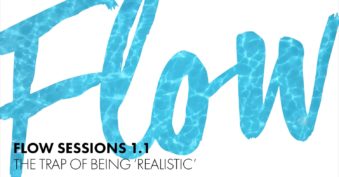
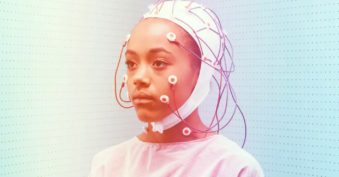


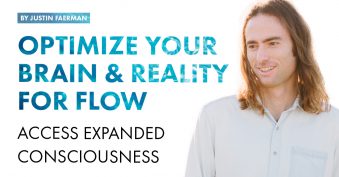
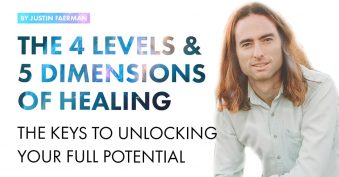











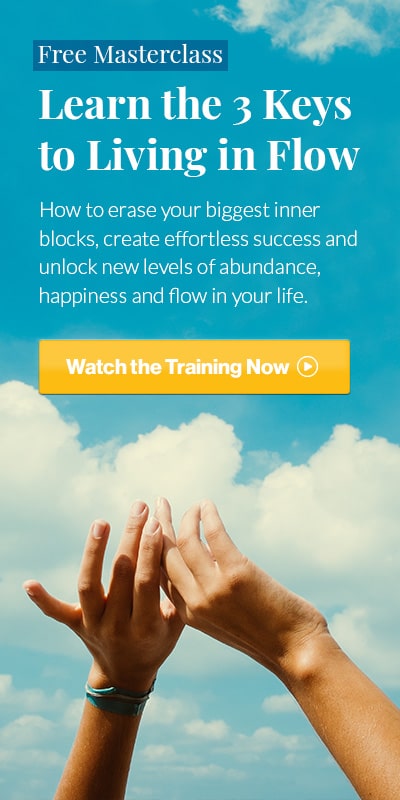
0 Comments